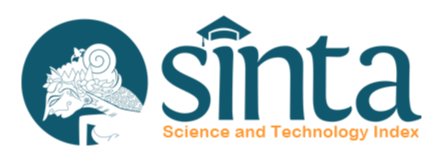Occupational Safety Practice of Hazardous Health-care Waste Management in Bengkulu City
DOI:
https://doi.org/10.12928/dpphj.v15i1.3622Keywords:
spirituality, knowledge, occupational safety practice, hazardous health-carewaste managementAbstract
Background: Facing many patients while the workers were limited prompted health workers to make a quick decision regarding health-care waste. High workload pressured health workers and put them at risk of getting diseases than others, especially diseases from medical waste that they took care. Besides, as health workers, they should be clean from bacteria or viruses that can transmit diseases to their patients. This research aimed to investigate the factors associated with occupational safety practice of hazardous health-care waste management in Bengkulu City. Method: This cross-sectional study used a stratified random sampling technique to select 230 respondents who work as health workers to respond to a questionnaire interview. The data were analyzed using multivariate logistic regression to find the association between the outcomes and the independent variables. Results: The prevalence of  poor occupational safety practice of hazardous health-carewaste management was 35.21 % (95% CI = 29.27-41.66). The factors significantly associated with occupational safety practice of hazardous health-care waste management were; gender (p-value < 0.001), department/unit (p-value < 0.001), knowledge (p-value < 0.001), and spirituality (p-value < 0.001). Conclusion:  gGnder, department/unit, knowledge, and spirituality were associated with occupational safety practice of hazardous health-carewaste management in Bengkulu City.
References
2. Central Bureau of Statistics. Indonesian Environmental Statistics 2019. Badan Pusat Statistik. 2019. 1–224.
3. Lim, J. H., Ahn, J. W., & Son, Y. J. Association between Hospital Nurses’ Perception of Patient Safety Management and Standard Precaution Adherence: A Cross-Sectional Study. International Journal of Environmental Research and Public Health. 2019;16(23):1–12.
4. Rezeki, S. Kesehatan dan Keselamatan Kerja. Pusdik SDM Kesehatan. Jakarta. 2016.
5. Alja’afreh, M. A., Mosleh, S. M., & Habashneh, S. S. Nurses’ Perception and Attitudes Towards Oral Care Practices for Mechanically Ventilated Patients. Saudi Medical Journal. 2018;39(4):379–385.
6. Vaismoradi, M., Tella, S., Logan, P. A., Khakurel, J., & Vizcaya-Moreno, F. Nurses’ Adherence to Patient Safety Principles: A Systematic Review. International Journal of Environmental Research and Public Health. 2020;17(6):1–15.
7. Ndejjo, R., Musinguzi, G., Yu, X., Buregyeya, E., Musoke, D., Wang, J. S., Halage, A. A., Whalen, C., Bazeyo, W., Williams, P., & Ssempebwa, J. Occupational Health Hazards Among Healthcare Workers in Kampala, Uganda. Journal of Environmental and Public Health. 2015.
8. Kihal-Talantikite, W., Zmirou-Navier, D., Padilla, C., & Deguen, S. Systematic Literature Review of Reproductive Outcome Associated with Residential Proximity to Polluted Sites. International Journal of Health Geographics. 2017;16(20):1-39.
9. Sahiledengle, B. Self-Reported Healthcare Waste Segregation Practice and Its Correlate Among Healthcare Workers in Hospitals of Southeast Ethiopia. BMC Health Services Research. 2019;19(1):1–11.
10. Karki, S., Niraula, S. R., & Karki, S. Perceived Risk and Associated Factors of Healthcare Waste in Selected Hospitals of Kathmandu, Nepal. PLoS ONE. 2020;15(7):1–10.
11. Wafula, S. T., Musiime, J., & Oporia, F. Health Care Waste Management Among Health Workers and Associated Factors in Primary Health Care Facilities in Kampala City, Uganda: A Cross-sectional Study. BMC Public Health. 2019;19(1):1–10.
12. Udofia, E. A., Gulis, G., & Fobil, J. Solid Medical Waste: A Cross Sectional Study of Household Disposal Practices and Reported Harm in Southern Ghana. BMC Public Health. 2017;17(1):1–12.
13. Rimantho, D. Identifikasi Risiko Kesehatan dan Keselamatan Kerja pada Pekerja Pengumpulan Sampah Manual di Jakarta Selatan. Jurnal Optimasi Sistem Industri. 2015;14(1):1–15.
14. Rimantho, D. Identifikasi Risiko Kesehatan dan Keselamatan Kerja pada Pekerja Pengumpul Sampah Manual di Jakarta Selatan. Jurnal Optimasi Sistem Industri. 2016;14(1):1-15.
15. Sari, P. F. O. Faktor-Faktor yang Berhubungan dengan Praktik Pengelolaan Limbah Medis Padat Puskesmas Cawas I Kabupaten Klaten. Jurnal Kesehatan Masyarakat. 2018;6(4):505–514.
Downloads
Published
Issue
Section
License
Authors transfer the copyright and grant the Disease Prevention and Public Health Journal right of first publication with the work simultaneously licensed under a Creative Commons Attribution License (CC BY-SA 4.0) that allows others to share (copy and redistribute the material in any medium or format) and adapt (remix, transform, and build upon the material) the work for any purpose, even commercially with an acknowledgement of the work's authorship and initial publication in Disease Prevention and Public Health Journal. Authors are able to enter into separate, additional contractual arrangements for the non-exclusive distribution of the journal's published version of the work (e.g., post it to an institutional repository or publish it in a book), with an acknowledgement of its initial publication in Disease Prevention and Public Health Journal. Authors are permitted and encouraged to post their work online (e.g., in institutional repositories or on their website) prior to and during the submission process, as it can lead to productive exchanges, as well as earlier and greater citation of published work (See The Effect of Open Access).

This work is licensed under a Creative Commons Attribution-ShareAlike 4.0 International License.







